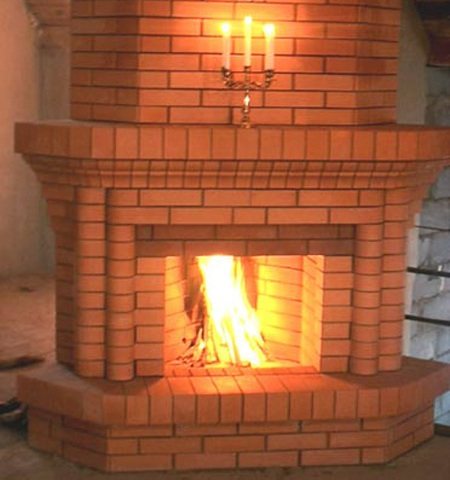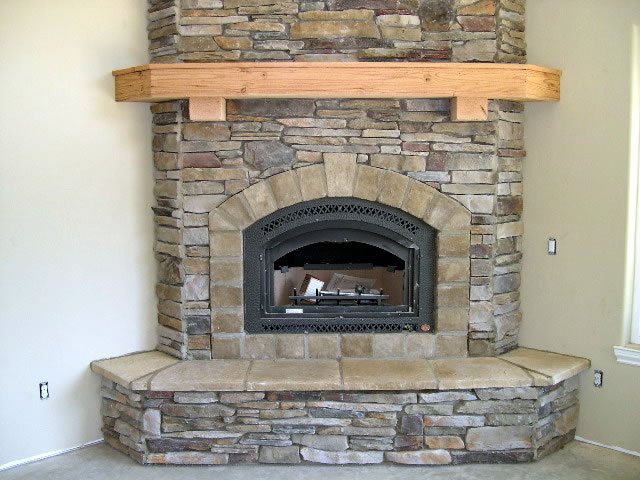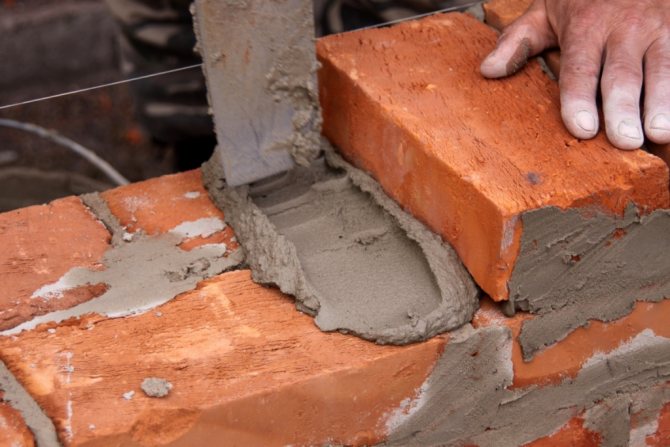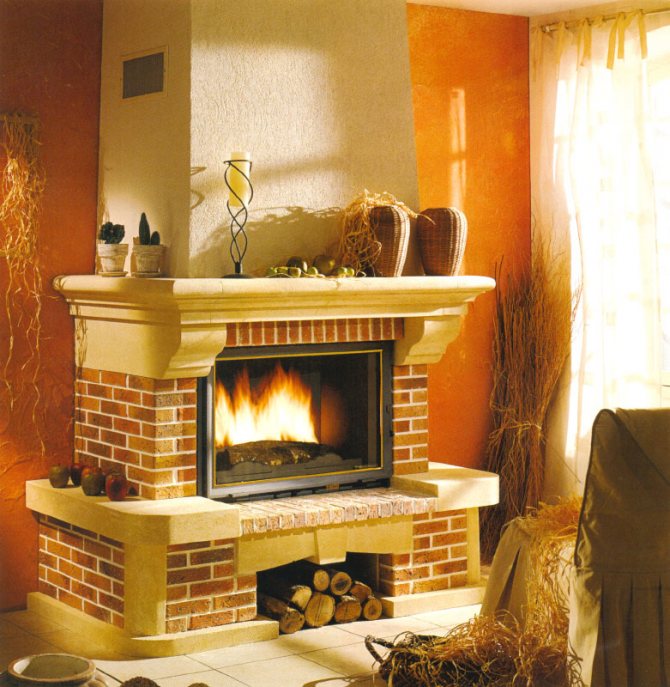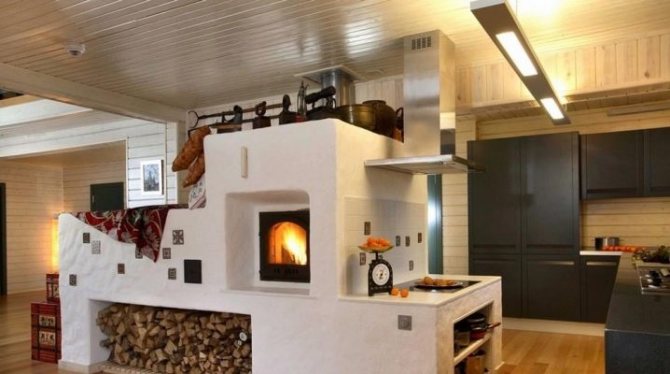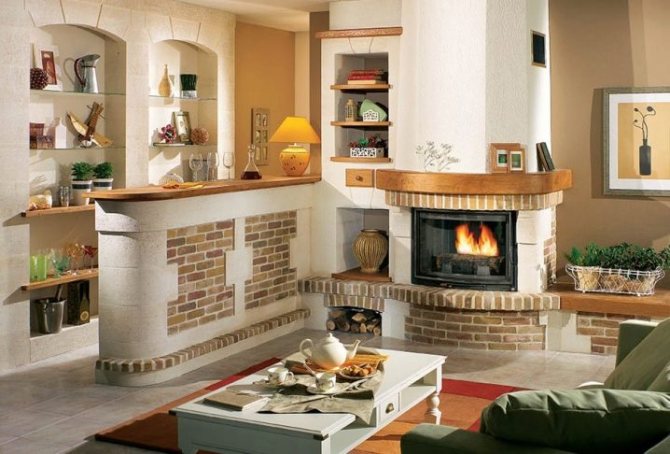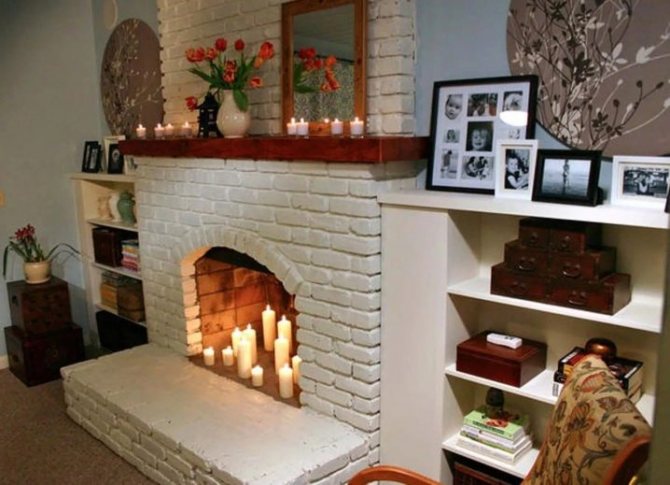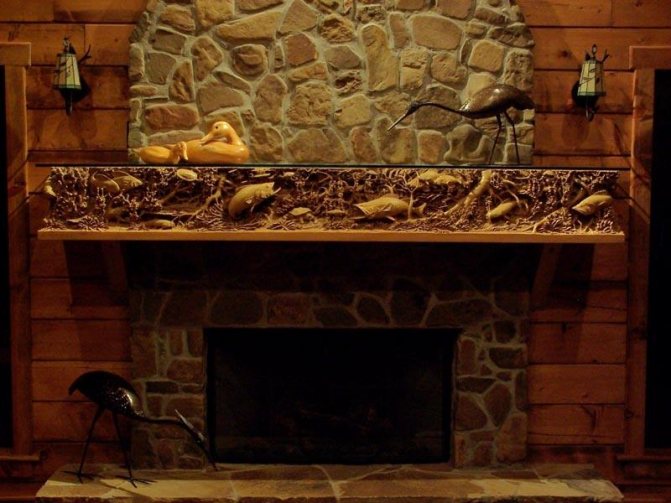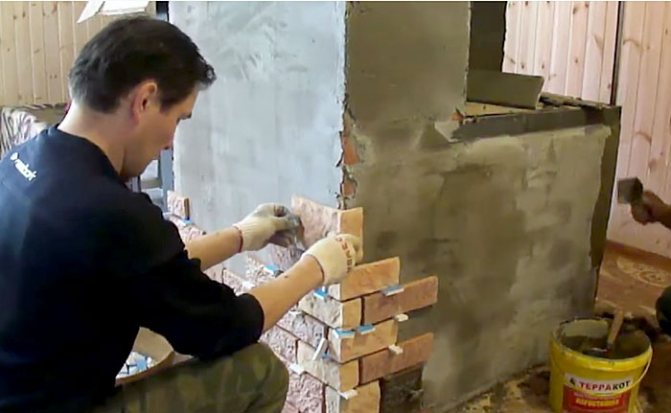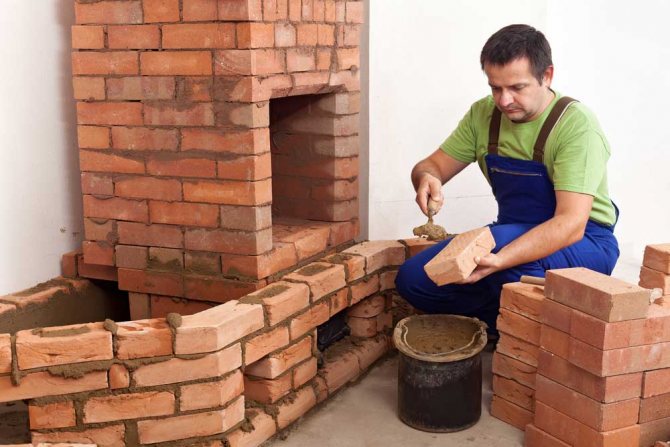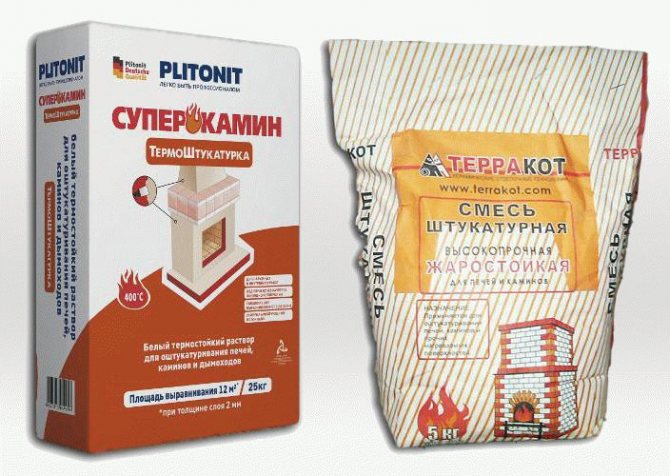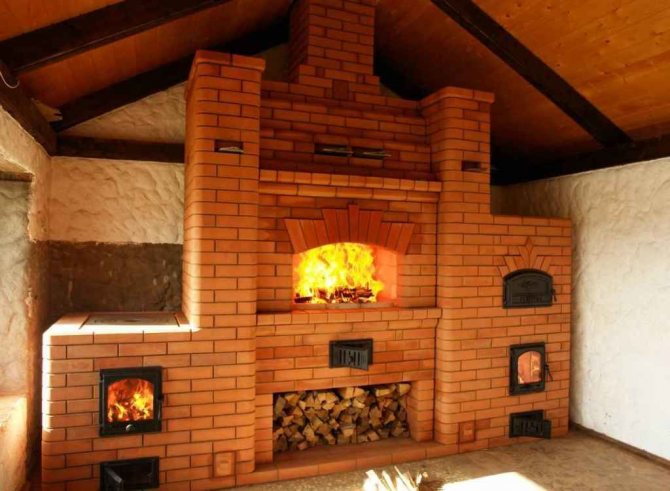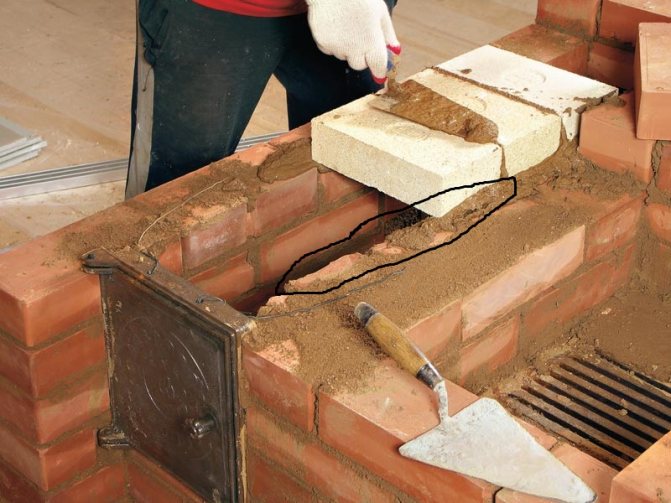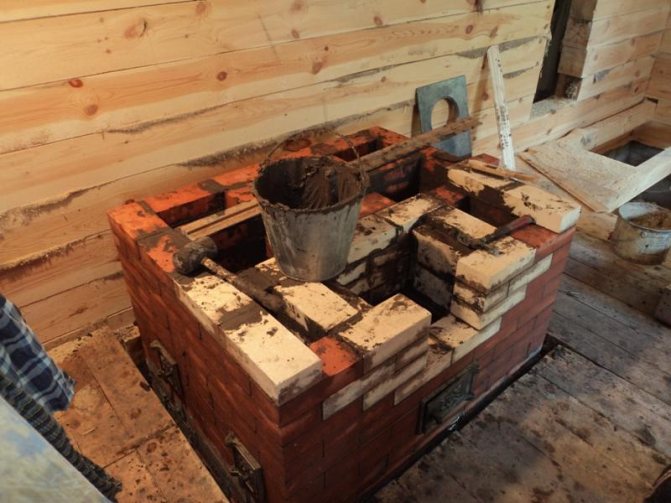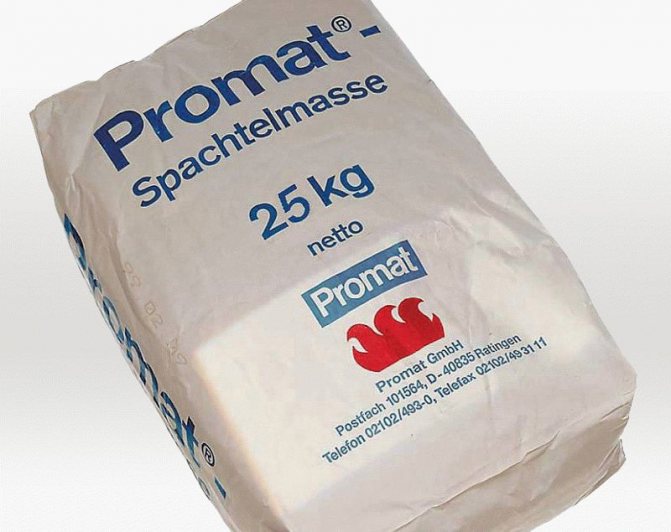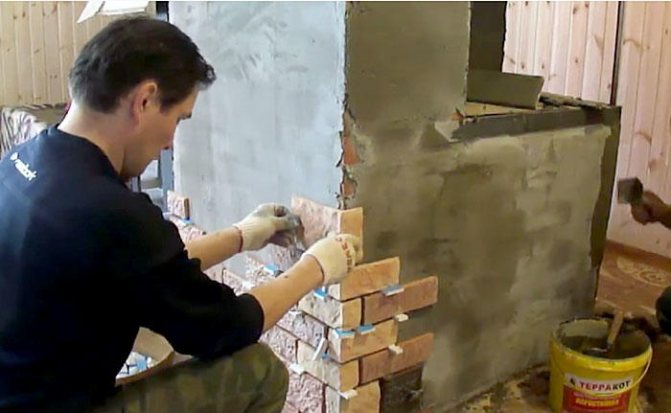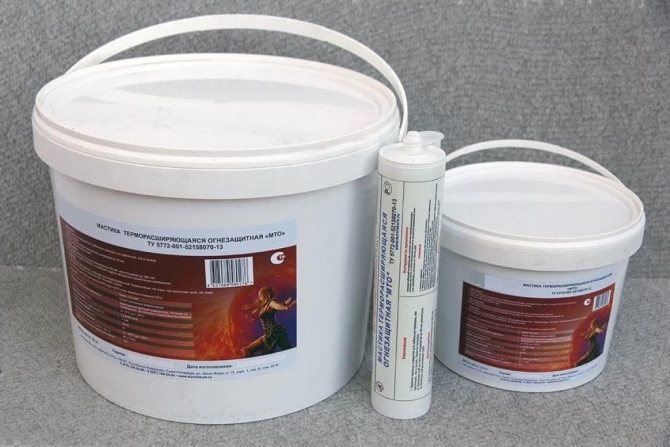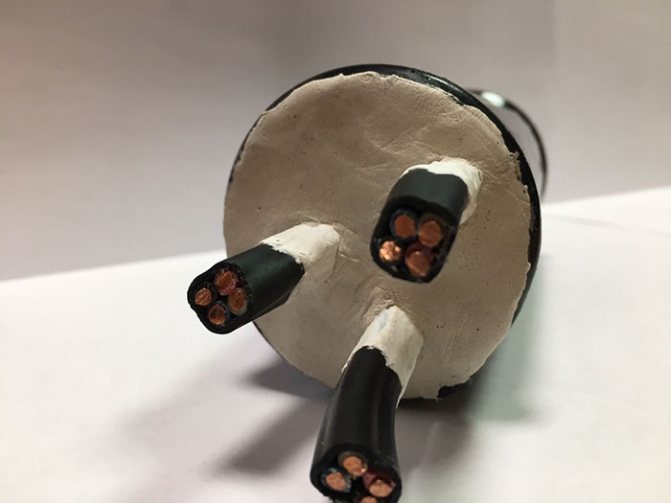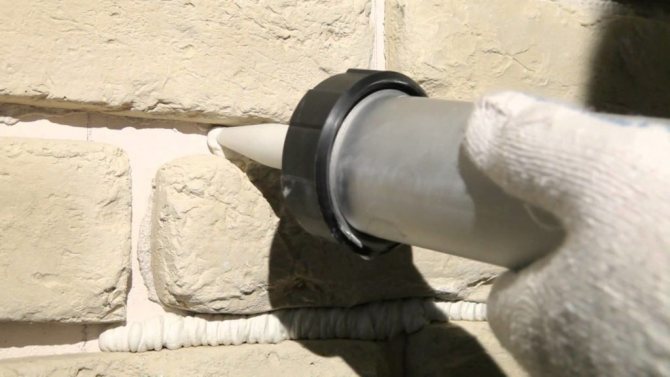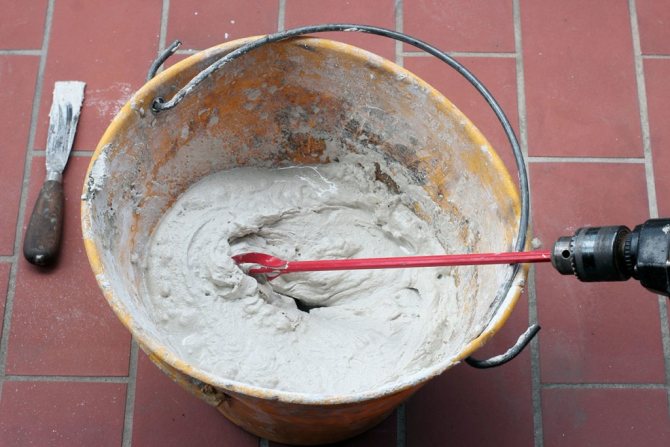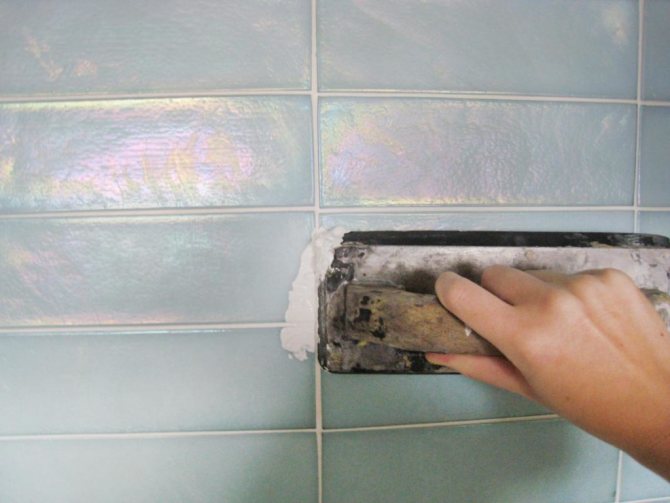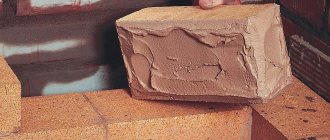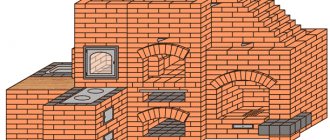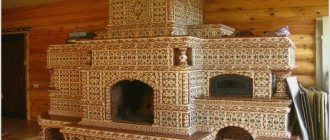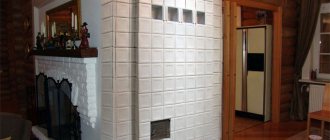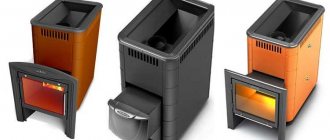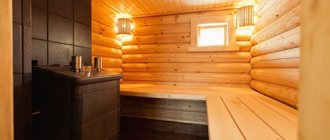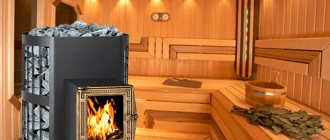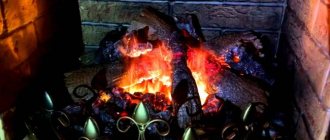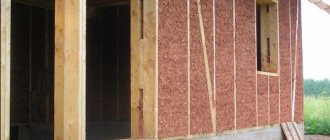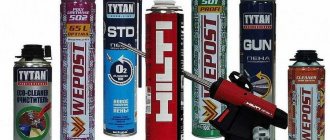Advantages of heat-resistant glue - quick preparation of the working solution and technological stability
In a private house or apartment, you can often find all kinds of fireplaces. Some of them are mostly decorative elements that serve to create a special atmosphere in the living room or other room. Other types of fireplaces and stoves are functional elements aimed at heating the room. Such fireplaces are often decorated with various stucco moldings, tiles and other decorative elements.
What is mastic for?
Furnace refractory mastic is commonly used to protect the joints of gas ducts, furnaces and other heating units from cracks and open cracks. The main problem is that the temperature of the combustion products can sometimes reach thousands of degrees Celsius, which leads to the appearance of mechanical defects.
When cracks appear, the chimneys cease to cope with their main duty - the removal of combustion products, so the latter fall into the living area. Heat-resistant oven mastic protects against room smoke and high levels of hazardous components and carbon monoxide. If this situation continues for a long time, then the human body can be seriously damaged.
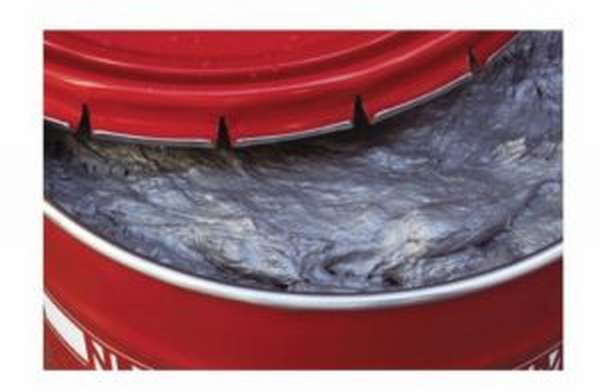
The main area of application of refractory mastic is in the execution of facing and other works that cannot be performed using standard adhesive mixtures. The main problem is that under the influence of high temperatures properties are lost, which can lead to the falling off of the facing stone or the appearance of cracks. Often, this material is also used for gluing insulating materials, but this format of use implies unnecessarily high costs.
Heat-resistant mastic for stoves and fireplaces
Many manufacturing companies supply ready-made adhesives that do not need to be diluted, you just buy and can already be used in practice. Such solutions are most often called mastic. It is better to use it by experienced craftsmen dealing with the laying of stoves, fireplaces, as well as their facing. This is due to the fact that the mastic hardens rather quickly in air, and the work must be done in a short time.
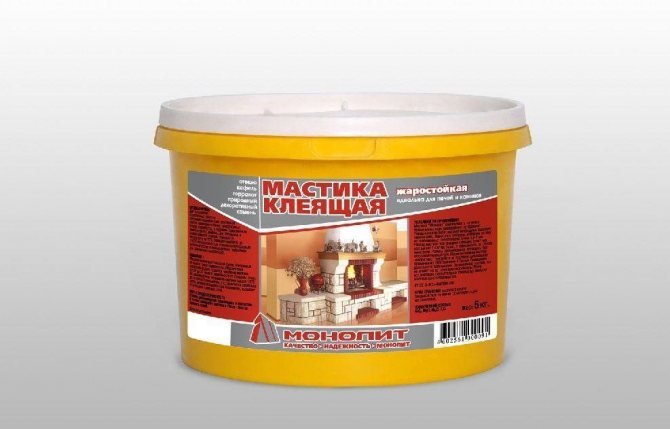

Mastic is selected for fireplaces and stoves, depending on the place of installation of the structure and its application
The cladding tile is glued directly to the brick, therefore the mastic must also be a heat-resistant adhesive.
Among the popular adhesive mastics are the following. Terracotta Mastic is a versatile adhesive suitable for finishing works at the level of both fireplace and stove portals, as well as for brickwork or natural stone masonry. Terracotta Mastic is able to withstand temperatures up to 1100 ° C.
Mixonit-Termo - directly mastic for tiling. Excellent for use on outdoor ovens, it does not deform due to temperature fluctuations, as well as when it drops to -30 ° C. The manufacturer of this mastic is Germany. Ceresit also has good products.
- Hot, - Thermal, - Fireproof, what's the difference?
You can find a huge amount of mastic in specialized stores, so this choice is amazing to some buyers. In addition to the fact that heat-resistant mastic for stoves and fireplaces is produced by various factories and companies, they also differ in name.
In recent years, many manufacturers have started to use some marketing ploy to increase sales of their products. So, some of them indicate that specific products:
- Withstands various chemical irritants,
- Has a shorter curing time,
- Special components or manufacturing techniques are used.
In fact, the difference between all of them is minimal, since all products are manufactured using a single technology. When buying, you should pay attention to the type of mastic: heat, thermo and refractory. The main difference lies in the operating temperatures that they can withstand without cracking or other mechanical damage.
According to numerous studies, the average operating temperatures are:
- For heat-resistant mastic - up to 1600 - 1700 degrees Celsius,
- For refractory mastic - up to 1,300 degrees,
- For heat-resistant mastic - up to 1,100 degrees.
It is recommended to use only heat-resistant mastic, however, if the price issue is acute enough, it is possible to differentiate the working zones in order to use simpler analogs in more remote areas.
Properties and composition
The main difference between old and new types of fillers lies in their chemical composition:
- In the past, mixtures of clay and sand have been used to give the finishing material the desired properties.
- Today the situation has changed somewhat due to the rapid development of the chemical industry - clay was replaced by inorganic chemical compounds, which are somewhat cheaper and more widespread than natural clay.
The properties of the refractory putty also differ. First of all, this is due to the uniform heating of the putty over the entire area, which turns the entire surface of the stove into a kind of radiator. Thanks to this property, the rate of warming up the room in the cold season significantly increases.
At high temperatures, the putty on the stove does not heat up in one place and does not fade, which protects the finishing material from falling off. Practice shows that the average service life of the putty is from four years, which is really a lot under such operating conditions.
You can always update the putty without dismantling, which is really convenient. Thanks to this property, your oven will always look like new!
The choice of mastic
The mastic selection process is both complex and simple. In specialized stores, you can find a huge number of proposals, and the consultation of specialized specialists will help you choose the right option. It is always worth remembering some of the features of the choice.
Criterias of choice
First of all, it is necessary to focus on the working temperature of the mastic. If facing the front part is planned, then a heat-resistant option should be chosen. Carefully calculate the area of the different zones to keep your purchase costs down.
If the question of price is acute for you, then you should also focus on the price, but you should not save on the type of mastic, as the consequences can be sad. Domestic products are distinguished by a lower price, which practically does not differ from foreign counterparts.
Top brands
Among the best brands that are available on the Russian market, the products of the following manufacturers stand out:
- Terracotta (Russia) - the average price for a 2.5 kg bucket is 150 rubles.

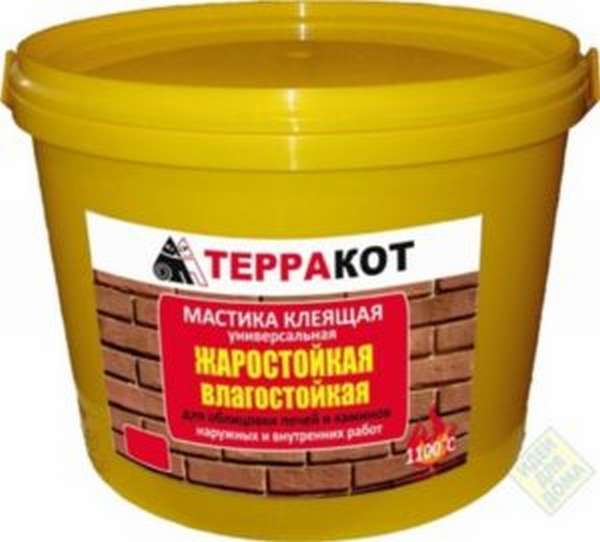
- Neomid Supercontact (Russia) - a 20 kg bucket costs about 1300 rubles.

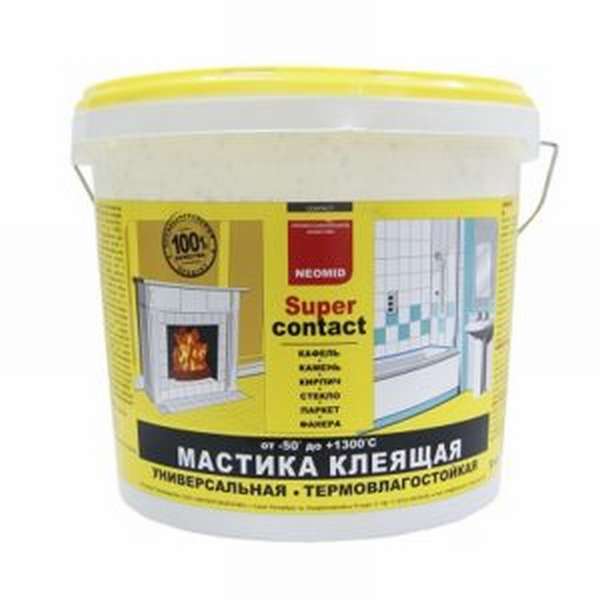
- Calorygeb (France) - produced in small volumes. The average price is 600 rubles.

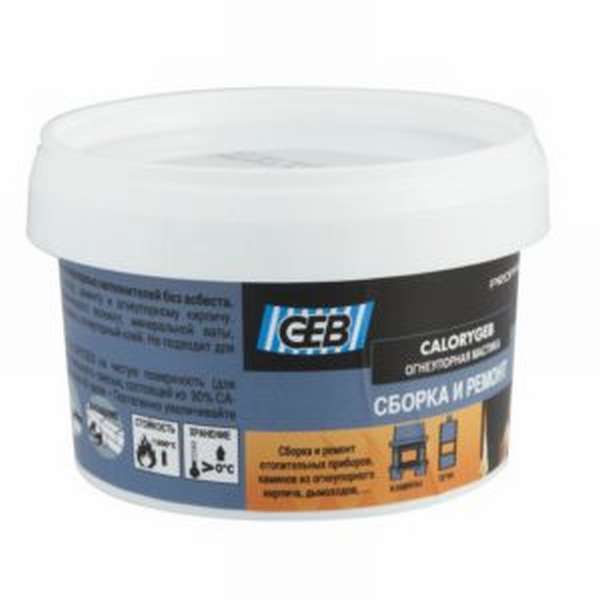
- Tytan (Poland) - an analogue of the previous version with the corresponding price and volume.
- Collafeu (France) - one of the best and most expensive options, which has excellent adhesion properties and ease of use.
Basic selection rules
In order to use the mastic and do the cladding of the furnace unit with your own hands, you must build on the following features of the stove or fireplace:
| Key Features | Description and explanations |
| Location
| Much depends on where your fireplace will be located. If the installation will be performed outdoors, choose a composition that performs well at subzero temperatures and is used in conditions of high humidity, as well as does not collapse under sudden temperature changes. The manufacturer's instructions supplied with the product will help you to familiarize yourself with these characteristics. |
| Cladding material weight
| Consider the weight of the selected facing material. For example, ceramic tiles are lightweight, while terracotta, clinker and natural stone are quite heavy and require the use of high-quality mastic with good adhesion, as well as the possible installation of a reinforced mesh. |
| Layer thickness
| In this area, it is not recommended to use dry mastics, the thickness of the applied layer of which exceeds two centimeters. Such products do not differ in their durability and the facing material, fixed in this way, will not be able to hold out for a long time. |
| Fuel type
| The price of mastic also depends on its composition, which is selected based on the type of fuel that will be used for the operation and functioning of your hearth. For installations exposed to strong heat (classic wood-burning structures), mortars are only suitable on the basis of clay, and not cement. |
Advice: when choosing a ready-made purchased product, give preference to those that have a mark indicating heat resistance. For facing the outer surface, you can buy a cheaper compound with a maximum heat resistance not exceeding 100-200 degrees. To finish the interior of the hearth and the combustion chamber, a maximum heat-resistant composition is required that can withstand temperatures up to 1000 degrees.
Important: if you want to achieve maximum adhesion of finishing materials to the surface of the fireplace, you must not only perform preliminary preparation, priming and cleaning, but also use a similar composition that was used when laying a brick base.
How to make do-it-yourself oven mastic?
For some customers, the issue of price is very important, so such people do not want to spend large sums of money on the purchase of specialized mastic for decorating fireplaces. Fortunately, there are some simple and effective recipes that really help you save money. DIY mixes can be created from:
- Clay and sand
- Concrete mix.
The first option is preferable, since clay is a versatile material that can easily withstand high temperatures. This recipe has long been used for the construction of furnaces, so there is no need to doubt its effectiveness.
To prepare mastic with your own hands, you will need actual clay and yellow sand of small and medium dispersion in a ratio of two to three. These materials are mixed with each other until a homogeneous consistency, and then water is added. The finished material must have a fairly thick consistency. If too much water is added, the adhesion properties will be reduced, making work more difficult.
Advantages and disadvantages
Each type of work has its own material that performs the necessary functions. For facing fireplaces or stoves, it is necessary to use refractory materials.
Benefits:
- Covering the surface, smoothes it, filling up empty joints, filling it with a uniform consistency;
- Decorative decoration;
- Saving bricks.Since the M500 brick has an impressive cost, it will be cheaper to putty a brick with the M150 brand with fire-resistant soil, saving a lot of money;
- Environmentally friendly material. The components of the composition do not have toxins and harmful substances that could affect human health;
- High adhesion and tenacity of the main components, with other materials;
- Resistant to high temperatures, which reduces the risk of cracking;
- If you take into account all the requirements and rules for applying and mixing the putty, it will last for decades.
There are much fewer disadvantages. These include a high price and a prerequisite for surface cladding. Without tiling or painting, this type of soil cannot be exploited.
Important. The erroneous judgment of many builders boils down to the fact that cement putty is used. In this case, the stove will last a short time, and the soil will fall off. 6. The main criteria for choosing a mixture
In order for the material to perform its functions in full, you need to pay attention to some mandatory requirements:
- resistance at elevated temperatures.
- elasticity of the composition;
- crack resistance;
- the best combination of components is the use of clay, a composition containing lime and gypsum is also desirable for use.
If the temperature has a detrimental effect on the material, there is a high risk of fire. This requirement is one of the most important, since it concerns the safety of human life.
The elasticity of the composition is also important. If the components are inelastic, it is difficult to achieve a smooth surface after application. To obtain a perfect oven surface, this condition must be met.
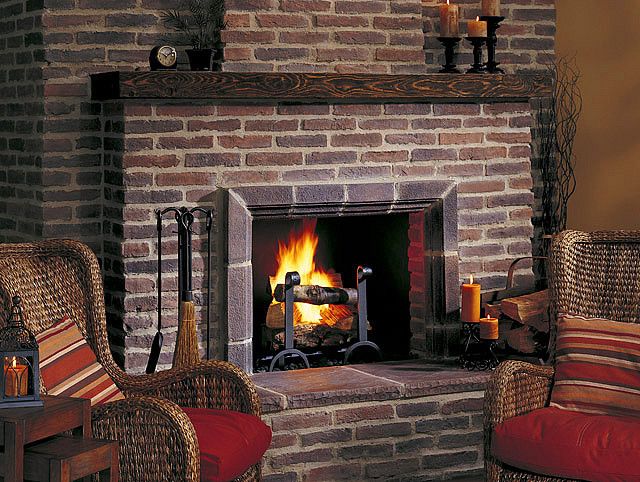

One of the most frequently asked questions is - can you use a concrete putty? The obvious answer is no. It does not have those properties and does not perform the functions that are needed to protect against excessive heat generation. This is due to the simple lack of refractory components. Otherwise, the soil will collapse within a few months, after its application.
Important. Price is not an obvious indicator of high quality. It is possible that inexpensive soils have high performance properties.
Instructions for use
The use of heat-resistant mastic is a fairly simple and uncomplicated process that does not require special skills and abilities.
- It is recommended to carry out temperatures in the range from five to forty degrees Celsius, since it is within these figures that the maximum "setting" of the mastic is achieved. The material is supplied as a dry mix. To prepare working mastic, add 300 ml of water to a kilogram of dry component.
- Before applying, it is necessary to thoroughly clean the working surface from dust and dirt that could remain at the previous stages of work. For these purposes, you can use a metal brush or other analogs. There is no need to degrease the surface with acetone or solvent.
- The mastic itself is applied to the surface using a plastering tool in a thin layer, the thickness of which is about five millimeters. If there is a need to create a layer of more than 15 mm, then a metal reinforcing mesh should be used to give strength.
- It takes about 36-48 hours to completely solidify the mastic. During this time period, it is not recommended to start a fire in the fireplace, as this can lead to a linear expansion of the mastic and an increase in its volume.
PLITONIT SuperFireplace Thermo Plaster
Working conditions
When carrying out work and within the next 3 days after their completion, it is necessary to maintain the temperature of the air and bricks within the range from +5 ° С to +30 ° С. The temperature of the mortar mixture during the work is from +10 ° С to +30 ° С.
Preparation of the base
Plastering is carried out only after complete drying and shrinkage of the oven.The base for plastering must be strong, not subject to shrinkage or deformation, free from dirt, dust, oils, grease and all types of paints, as well as loose elements. It is recommended to heat the stove immediately before plastering. Before applying the plaster, the prepared base must be primed with Plitonite Primer and dried for 1 hour.
Mortar preparation
For mixing the dry mix, use water from the drinking water supply. Mixing ratio: 1 kg of dry masonry mixture requires 0.18-0.22 liters of water (4.5-5.5 liters per 25 kg). Pour the dry mixture into a predetermined amount of water and stir for 2-3 minutes using an electric mixer or an electric drill with a nozzle at a speed of no more than 600 rpm until a homogeneous consistency is obtained. Let the mortar mixture stand for 10 minutes and mix again. While stirring again, add water up to the maximum value of the above ratio. The time of using the ready-made mortar mixture is no more than 4 hours.
Operating procedure
Contact of the solution and metal products is not allowed. If necessary, apply the second layer after the first layer has completely dried. Drying time depends on layer thickness, substrate temperature and ambient conditions. When applying the plaster, joining is not necessary. Using a curly spatula, you can create a decorative texture. It is possible to paint over plaster with special heat-resistant paints. After finishing the plastering work, the structure must be dried naturally. After 7 days, it is possible to start operating the structure, provided that the temperature of the outer surface does not exceed + 50 ° C. Full operation is possible in 10-14 days.
Precautions
The mixture belongs to the 4th hazard class (low-hazard substances) according to GOST 12.1.007. When performing work, use gloves, goggles, respiratory protection. Avoid contact with skin and eyes. In case of contact with eyes, rinse immediately with plenty of water. PROTECT FROM CHILDREN!
Attention
When performing work, it is necessary to comply with the requirements of SNiP 41-01-2003. The specified characteristics are valid at an ambient temperature of 20 + 2 ° C, relative humidity of 60 + 10%. When performing work, you should be guided by the instructions for conducting general construction work and safety in construction. During the production of work, it is recommended to periodically stir the mortar mixture. Additional introduction of water into the ready-made mortar mixture is prohibited. Wear gloves when performing work.
Transportation and storage conditions
Transport the mixture in covered vehicles in accordance with the rules for the carriage of goods. Store bags with dry mix in covered, dry rooms in conditions that ensure the integrity of the packaging and protection from moisture. The shelf life in the manufacturer's container is 12 months from the date of manufacture, subject to the conditions of transportation and storage.
Structure
Complex mineral binder, fractional sand, mineral fillers, modifying polymer additives
Manufacturer's warranty
The manufacturer guarantees that the mixture meets the requirements of technical conditions, provided that the consumer observes the conditions of transportation, storage and the instructions of this manual. The manufacturer is not responsible for non-compliance with the technology of working with the material, as well as for its use for purposes and conditions not provided for in this manual. Deviation from net weight in accordance with GOST R 8.579-2001. The products are approved for use in all types of civil construction (Aeff <370 Bq / kg, class I materials according to SanPiN 2.6.1.2523–09 (NRB-99/2009).
How to properly cover the stove
The experience of repairing furnaces has a long history. Each area has its own characteristic features of the work. From the tools, you will need a trowel and a grater (half-grater, as a rule). Some will trim the plaster straight by hand at the end. In general, the main stages of work are the same:
- first, the surface of the stove must be well cleaned, swept;
- then it is desirable to heat it, the existing cracks can be sprayed with water to moisten;
- after which putty should be applied in a thin layer. The main thing is not to overdo it;
- after the smeared layer has dried, if necessary, large cracks can be reinforced with reinforcement with a special mesh;
- then the surface is covered with plaster. It is advisable to do this in two stages, each time applying a layer with a thickness of up to 5 mm.
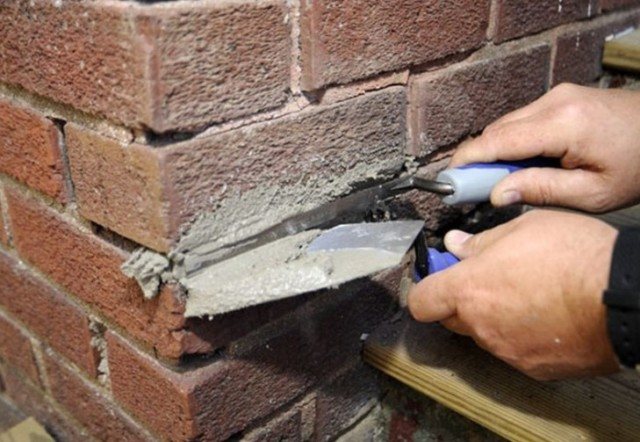

If the stove is covered with decorative trim, then the cover is removed before covering the cracks. If necessary, the doors are reinforced with wire. Special adhesives are prepared in small portions, since they can harden strongly.
Ultimately, by spending little money, you can get rid of the defects of the oven surface. The result will please with the appearance and security for the owners of the house.
With active operation of the furnace, a large number of cracks appear during the first five years, which allow carbon dioxide and carbon monoxide to pass through.
For a room, such cracks are very dangerous, since a person can suffer irreparable harm to health if they stay in the house for a long time. Therefore, they must be sealed, and a refractory putty will perfectly help with this. Even with this mixture, you can hide visual defects.
What are materials and mixtures for ovens made of?
It should be noted that modern technologies make it possible to create almost any artificial material that would have the desired characteristics. But this is not always justified. The fact is that in many cases, natural ingredients are more effective and cheaper.
On a note! The concept should be correctly interpreted - refractory. This means a material that has heat resistance and heat resistance properties, can withstand temperatures higher than the design ones, and also does not react with various aggressive substances (gases).
Materials (edit)
There are many different materials that are used in the construction of furnace structures. True, in most cases, they consist of the same, clay. This is a fairly unique element that can withstand high temperatures perfectly. But she also has one drawback. It, by itself, cannot connect two surfaces. It is mainly used for indoor work, where there is no aggressive environment.
Clay is subjected to a special process, namely firing. So it is possible to obtain a very refractory material - chamotte, which serves as the basis for the brick. It is used to create masonry inside the oven.
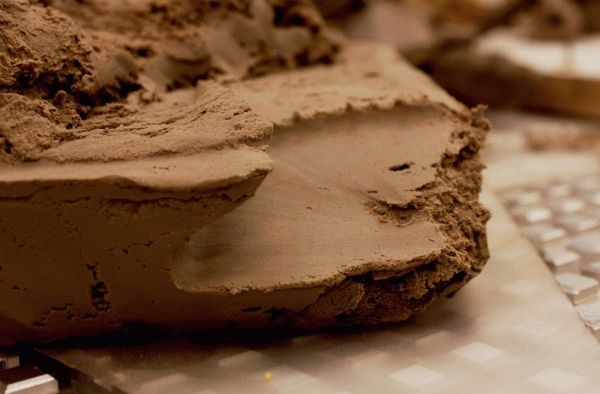

Fireclay
On a note! It is believed that during the use of fireclay bricks, when it is exposed to high temperatures, it further improves its characteristics.
Refractory mixtures
It is not possible to simply lay out a wall of fireclay bricks (blocks). To give it the necessary strength, you need to use a solution that would have the same refractory properties. You can make the mixture yourself, or give preference to those sold in the store. In most cases, they are not very different in their composition. True, it is not always possible to create a truly high-quality solution at home.
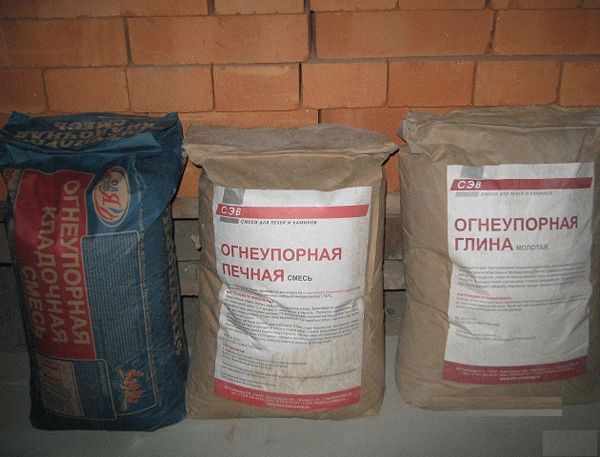

When laying or finishing the furnace, use refractory mixtures
The most common blend includes:
- two parts of clay;
- cement (0.3 parts);
- one piece of sand.
Such a solution is used for work if the expected temperature does not exceed 850-900 ° C.The components of such a material, in addition to clay, serve to bond surfaces, but do not always have the proper (heat-resistant) properties. This must be taken into account when choosing a cement.
For the production of mixtures, which are sold in stores, a special element is used - mortar. It consists of clay and crushed fireclay bricks. The more it is added to the composition, the higher the possible operating temperature will be. It is important to take into account that the seam must be made no more than 5-8 mm. Such a solution is made right before starting work; it can withstand temperatures up to 16,000 ° C.
Experienced stove-makers advise, in order to give the seam an aesthetic appearance, quartz sand can be added to the solution. Then its thickness can be up to 12 mm.

